Tips for Visiting Zion in September – What to do and see
September month is one of the best times to visit Zion because of the pleasant temperatures, fewer tourists, and most importantly, the spectacular fall foliage.
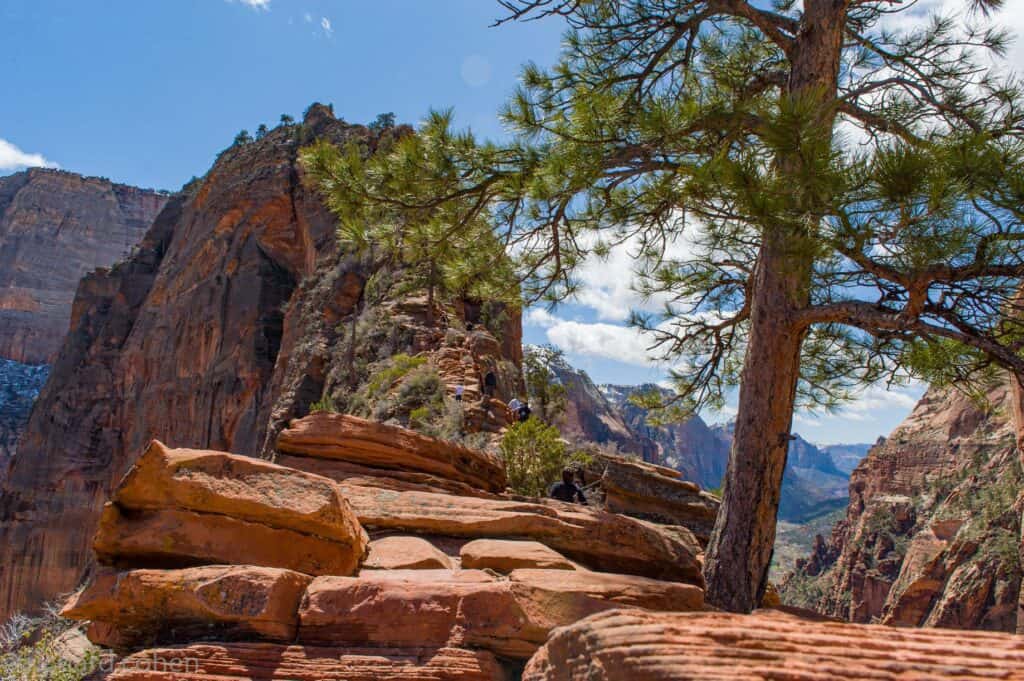
This is the best time to avoid the crowds – from late fall to early spring when the park is even less crowded and everyone is back to school.
Visitors can also escape crowds by going early in the morning. You’ll almost have the park to yourself if you start your hike or exploration just after sunrise. The majority of guests do not arrive until after 10 a.m. In the morning, you’ll have a better chance of seeing wildlife and the best light for photos.
There are numerous advantages to visiting Zion National Park in September. The best part about visiting Zion in September is the variety of activities available. Hiking, backpacking, rock climbing, canyoneering, bicycling, and off-roading are all options for visitors.
Thank you for supporting this website written by an American. This post may contain affiliate links. This means I earn a small commission on these links at no extra cost to you.
National Park Entrance Fees
To enter the National Parks, you’ll need to pay an entrance fee or have a National Parks Pass also known as American the Beautiful Pass.
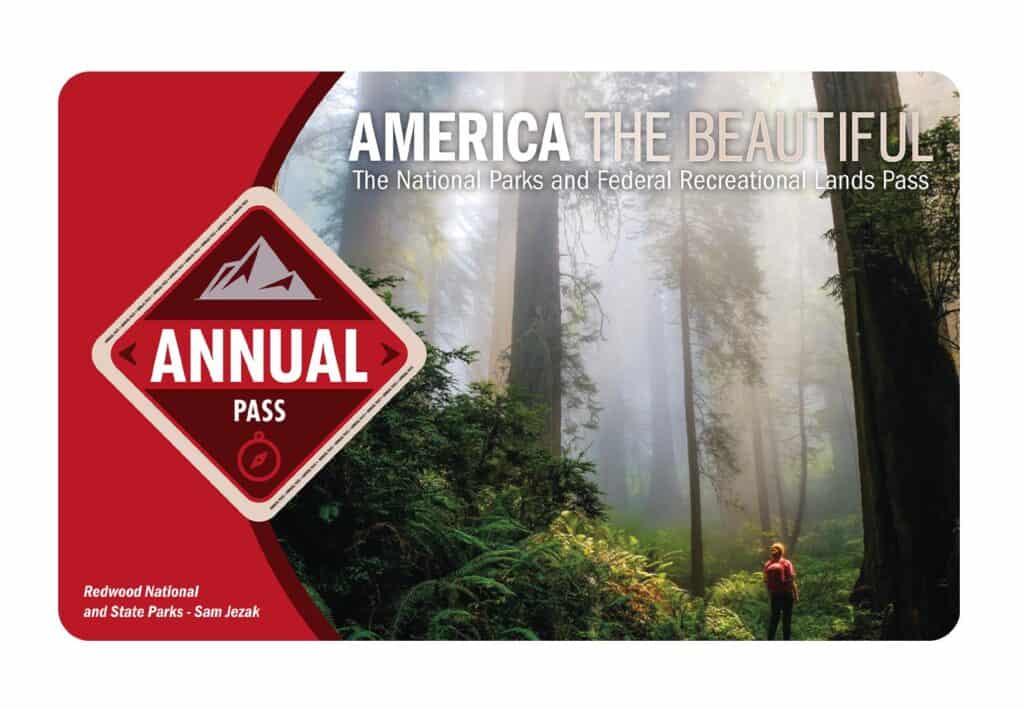
It costs $80 for a yearly America the Beautiful Pass. This gives you access to all national parks and federal areas that charge fees. The America the Beautiful Pass is well worth it!
I purchased my first one in 2016 and it’s such a money-saver! Plus 10% of sale proceeds go to the National Park Foundation.
Tips for Visiting Grand Teton National Park
Grand Canyon National Park is perfect for outdoor enthusiasts. There is something for everyone on this list and for different fitness levels. Also, note that it is dry and hot (in the summer), and make sure you know what you are getting into before you start. Here are a few tips for visiting the Grand Canyon:
- Bring a reusable water bottle and lots of water! Remember you are in the sun and you will need to drink lots of water. I love my LifeStraw Filtered Water Bottle. I can refill this bottle anywhere and it comes with a carabiner to connect it to my daypack.
- Check the Weather – days over 100 degrees are very common. Make sure to check.
- Hiking boots or sandals that will protect your feet! I love good shoes. I need all the support and help I can get. I actually love these sandals for hiking and also love these hiking boots.
- Bring hiking poles for balance and to protect your knees. I know many experienced hikers (and even amateur ones) think that hiking poles are for old people who lose their balance. Actually, hiking poles can help when going down steep inclines or when scrambling over rocks. They are great to hike with even for the most experienced hiker.
- Wear a sunhat. I feel like this whole post is about how high you are in the mountains and how much closer you are to the sun but it is so true. At elevation, you are closer to the sun and more likely to burn. Wear sun protection such as a sun hat and sunscreen.
- Be aware of the wildlife. This is the Southwest and you will need to watch out for snakes and other wildlife such as moose or a bear. Please stay away from wildlife and do not feed them. I recommend carrying bear spray as well.
- Start Early – If you want to avoid the traffic and the heat you will need to start your hike early. That way it will be nice and cool and the smog will not affect you either.
- Leave no trace. If you are new to the concept of Leave No Trace it is all about preserving the environment to ensure it is in the same or better condition when you leave it. This means that you should stick to the trails and carry out everything that you carried in. This is a great explanation of the Leave No Trace principles!
- Water shoes are great for water hikes– If you don’t have a pair, I highly suggest it as they are affordable. I have an article on the pros and cons of several pairs of water shoes.
- Bring Bug Spray and a snack: Be sure to bring everything you need including a snack like a protein bar plus BUG SPRAY.
Where to stay near Grand Canyon National Park
The Grand Canyon makes for a great weekend escape. Fresh air, beautiful scenery and being in nature does a world of good for the soul. I recommend staying as close to the park as possible and even treating yourself with a cabin with a spa pool to relax at night.
- There are lots of fantastic Airbnbs near the Grand Canyon. I have made a list of the best airbnbs around the park wherever you decide to stay. You can also check out my post on Where to Stay near the Grand Canyon to find the perfect hotel for any budget.
If you are taking a road trip remember to reserve a car in advance using Discover Cars .
Weather at Zion National Park in September
In September, the weather is very warm, but as the month progresses, the weather becomes crisper and more fall-like.
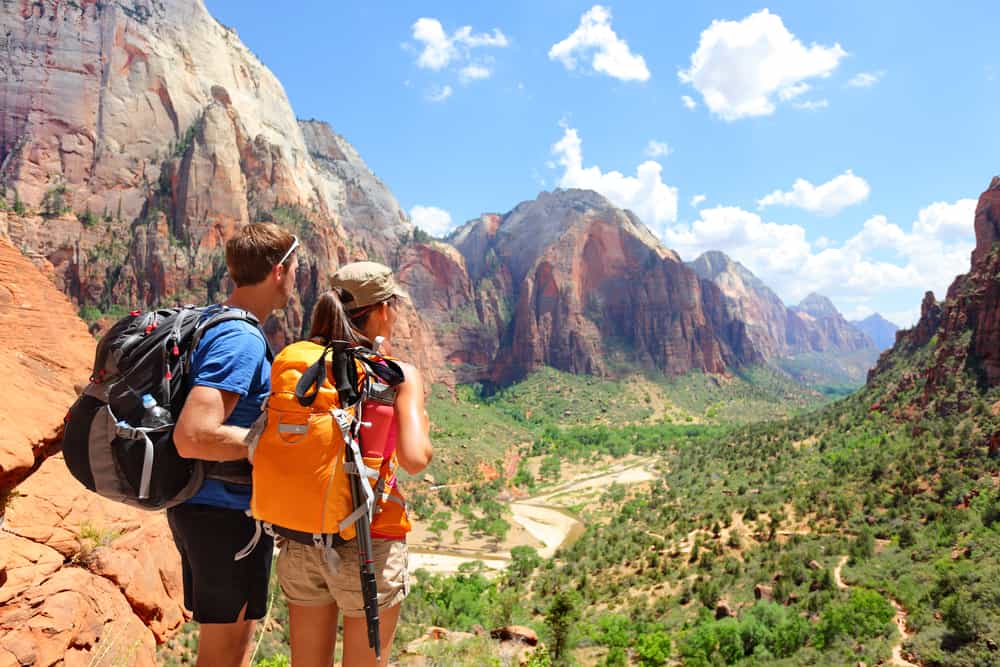
September weather is accompanied by beautiful and clear blue skies, making for fantastic sunrise and sunset photography opportunities. Peak foliage begins at the park’s highest elevations, then gradually descends over the next few weeks to lower elevations.
In September, the average temperature in Zion Canyon is 91 degrees Fahrenheit (33 degrees Celsius) with a low of 60 degrees Fahrenheit (33 degrees Celsius).
The average temperature in Kolob Canyons is 80 degrees Fahrenheit (26/10 degrees Celsius), with a high of 80 and a low of 51 degrees Fahrenheit (26/10 degrees Celsius).
During September, it rains on average for four days. The monsoon season in Zion runs from mid-July to mid-September; always check the weather forecast before embarking on a hike, and be aware of the dangers of flash flooding.
Tips for Visiting in Zion National Park
Zion is perfect for outdoor enthusiasts. There is something for everyone on this list and for different fitness levels. Also, note that it is dry and hot (in the summer), and make sure you know what you are getting into before you start. Here are a few tips for visiting Zion:
- Bring a reusable water bottle and lots of water! Remember you are in the sun and you will need to drink lots of water. I love my LifeStraw Filtered Water Bottle. I can refill this bottle anywhere and it comes with a carabiner to connect it to my daypack.
- Check the Weather – days over 100 degrees are very common. Make sure to check.
- Hiking boots or sandals that will protect your feet! I love good shoes. I need all the support and help I can get. I actually love these sandals for hiking and also love these hiking boots.
- Bring hiking poles for balance and to protect your knees. I know many experienced hikers (and even amateur ones) think that hiking poles are for old people who lose their balance. Actually, hiking poles can help when going down steep inclines or when scrambling over rocks. They are great to hike with even for the most experienced hiker.
- Wear a sunhat. I feel like this whole post is about how high you are in the mountains and how much closer you are to the sun but it is so true. At elevation, you are closer to the sun and more likely to burn. Wear sun protection such as a sun hat and sunscreen.
- Be aware of the wildlife. This is the Southwest and you will need to watch out for snakes and other wildlife such as moose or a bear. Please stay away from wildlife and do not feed them. I recommend carrying bear spray as well.
- Start Early – If you want to avoid the traffic and the heat you will need to start your hike early. That way it will be nice and cool and the smog will not affect you either.
- Leave no trace. If you are new to the concept of Leave No Trace it is all about preserving the environment to ensure it is in the same or better condition when you leave it. This means that you should stick to the trails and carry out everything that you carried in. This is a great explanation of the Leave No Trace principles!
- Water shoes are great for water hikes– If you don’t have a pair, I highly suggest it as they are affordable. I have an article on the pros and cons of several pairs of water shoes.
- Bring Bug Spray and a snack: Be sure to bring everything you need including a snack like a protein bar plus BUG SPRAY.
Things to do in Zion in September
Drive the Zion-Mt. Carmel Scenic Highway
Take the time to appreciate all four picturesque roads in Zion National Park. In the fall, the Zion Canyon Road is only accessible by shuttle or bicycle. The shuttles are completely free. In Springdale, you can rent bicycles.
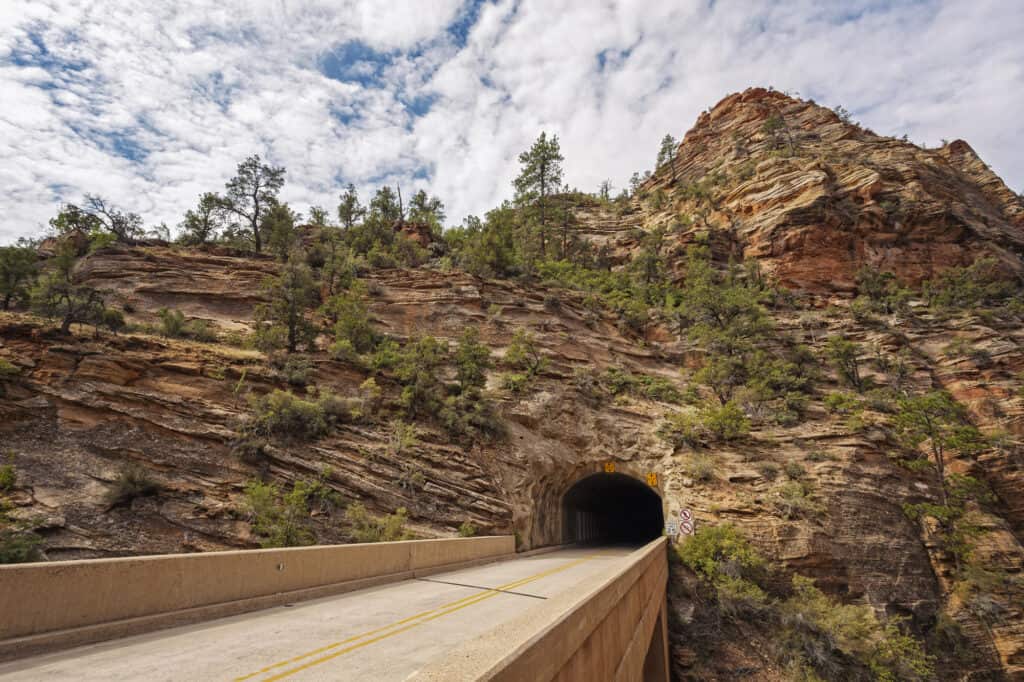
Zion-Mt. Carmel Highway and Tunnel is a must see! The tunnel is 1.1 miles long and gains 800 feet in elevation. The drive from Zion Canyon to the east entrance of Zion National Park is magnificent! Take advantage of the pullouts to take pictures or go for a hike.
The park’s shuttle bus is a convenient way to go throughout this area, stopping at scenic sites and hiking trailheads along the way. On shuttle buses, bicycle racks are available.
This route includes a lookup to Angels Landing and offers views of several of the park’s most well-known attractions. At the start of the Narrows, one of the park’s most recognized attractions, the road comes to an end. The majority of the park’s key attractions are located along this road
History Museum
The Zion Human History Museum, located just outside of Zion National Park’s south entrance, is an excellent place to learn about the area’s fascinating history.
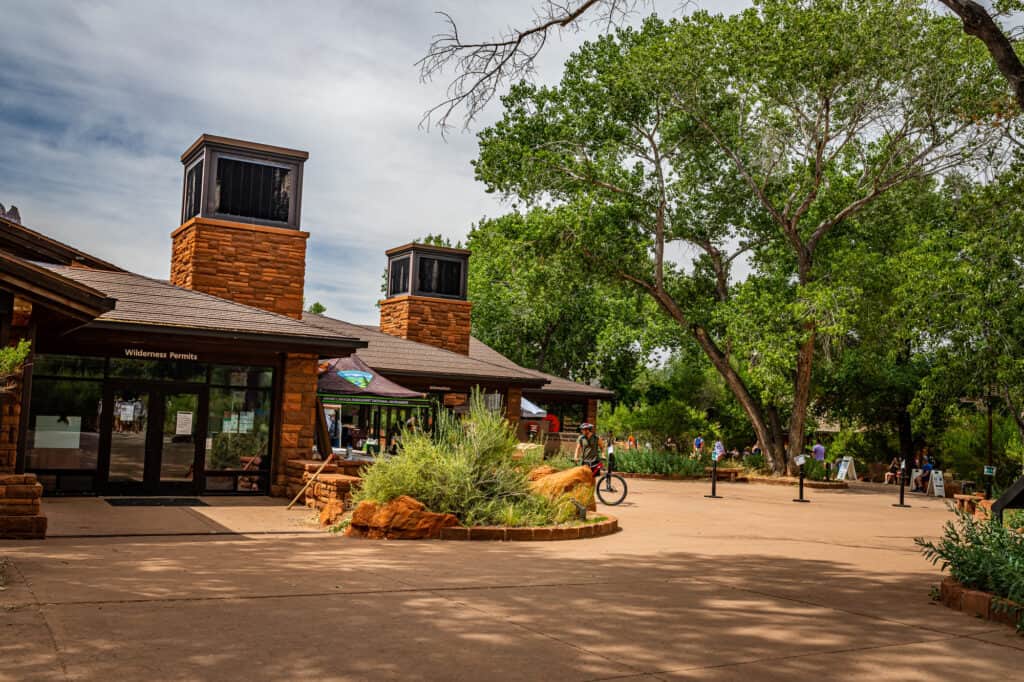
This building, which was completed as part of the National Park Service’s Mission 66 building and infrastructure effort, has functioned as the Zion Museum for nearly 60 years. The displays have undergone numerous changes and rearrangements over that time.
Permanent exhibits at the museum highlight the diverse human cultures that have inhabited the area over time, including American Indians and pioneers. Every half hour, the museum also shows a 22-minute documentary that gives a summary of the park’s history.
In the bookstore, you can also purchase books and souvenirs.
Hiking in Zion in September
September is a fantastic season to go hiking in Zion National Park—with routes ranging from easy to strenuous, there is something for everyone in Zion National Park, allowing you to see the best of Zion from incredible vantage points.
The weather is hot, so bring lots of water and salty snacks, and the trails can be crowded—consider how well you tolerate crowds before visiting, and arrive early to avoid the heat and crowds.
There are also fantastic trails down the valley floor that leads you alongside the flowing and chilly Virgin River and through lush cattails and cottonwoods.
Hiking in Zion is accessible to people of all ages and abilities, with paths ranging from easy to strenuous.
Canyon Overlook Trail
The Canyon Overlook trail is a must-do if you’re visiting Zion National Park in the fall. This trail allows you to enjoy the grandeur of Zion National Park without having to undertake a strenuous hike.
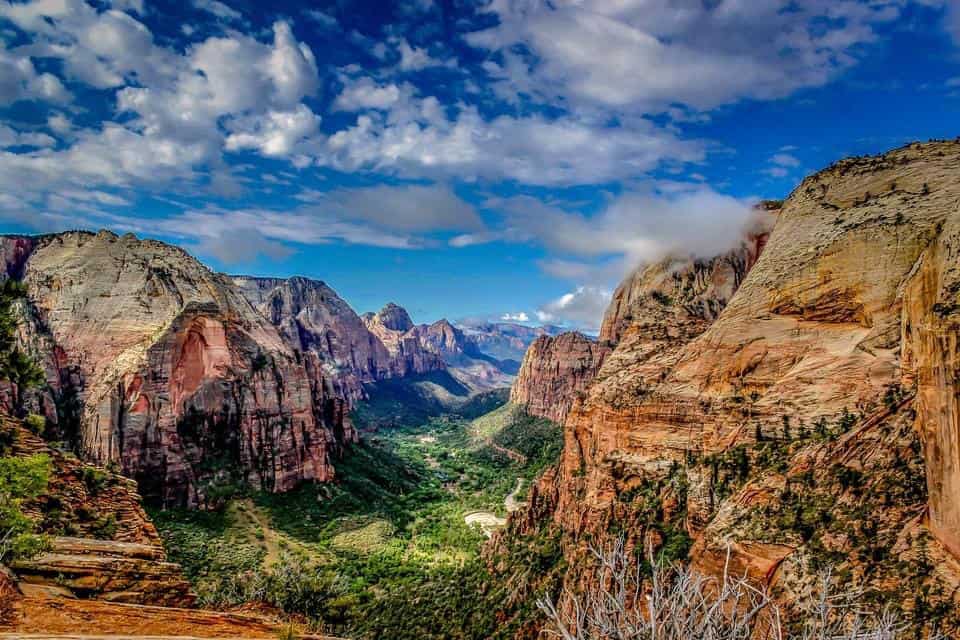
If you have a car, travel east on Route 9 to the famed Zion Mt. Carmel Tunnel and enjoy the trip through the Upper East Canyon’s beautiful Slickrock.
The Canyon Overlook Trail, which begins just east of the tunnel and ends at a spectacular viewpoint looking into the main canyon, is one of the few official trails in the upper East Canyon.
There are some fantastic views down into the Pine Creek slot canyon below, as well as a nice shaded alcove with thick ferns sprouting from the rocks.
The trail leads to a delightful tiny sheltered alcove with a seep and luxuriant ferns growing out of the sandstone walls around halfway to the viewpoint; this location provides nice relief during the warmer seasons.
This hike is only one mile long and takes approximately an hour to complete. Canyon Overlook is also a great place to see and photograph the sunrise.
Checkerboard Mesa
Make Checkerboard Mesa one of your pull-offs as you drive along with the Zion – Mt. Carmel beautiful highway.
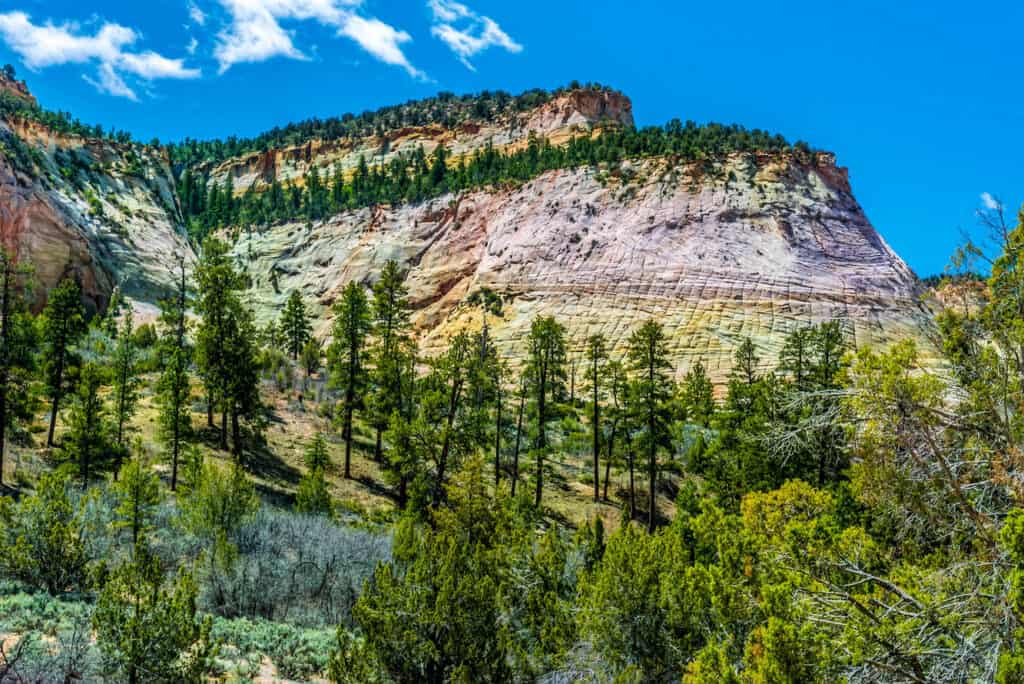
Its light grayish appearance contrasts with the orange sandstone strata that make up the neighboring mountains. Checkerboard Mesa has its point of view, and rightly so, it is deserving of much more than a passing glance.
A Zion Canyon bike and walk tour is another option that some people prefer to take instead of the shuttle because it allows them to be entirely outdoors, stop more freely, and pull over in spots where the shuttle does not stop.
From the road or by strolling along short routes to picturesque vistas, sights like the Court of the Patriarchs and the Virgin River can be seen and photographed.
In both directions, shuttles run frequently.
Riverside Walk
The Riverside Walk, which begins at the Temple of Sinawava, the last shuttle stop, is a must. The path is largely flat and paved.
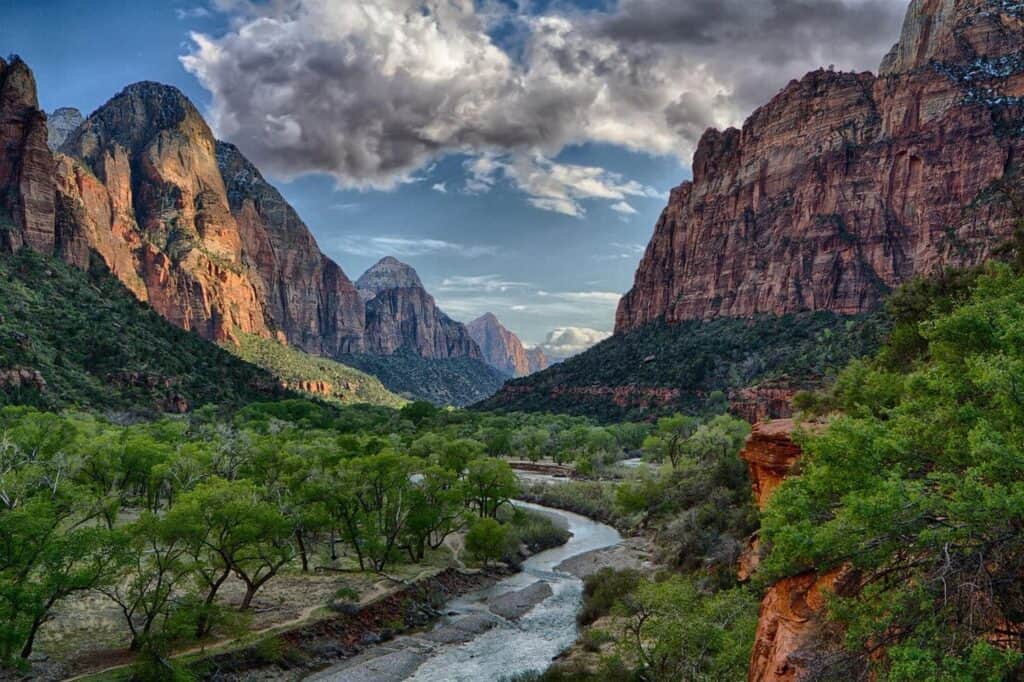
You’ll wind your way along the Virgin River, with chances to stray from the paved trail and go closer to the river.
The walk is 2.2 kilometers round trip and is suited for all ages and abilities. The walk through the trees with the mountains on either side of the river is peaceful and lends itself to a relaxed pace as you take in your surroundings.
The Riverside Walk trail is entirely paved, making it ideal for small children and strollers. This is a simple hiking trail that becomes breathtakingly beautiful when the leaves change color. During the fall months, this area of Zion National Park will be filled with lovely tones of yellow and red plants and trees.
It’s not as flashy as some of the other hikes in Zion, but the walk through the trees with the mountains on either side of the river is peaceful and lends itself to a relaxed pace as you take in your surroundings.
Angel’s Landing Trail
Angels Landing is Zion National Park’s most popular hike. This hike is nearly 5.5 miles long and has a 1500-foot elevation gain. As you progress up the mountain, you’ll be able to see some spectacular hues.
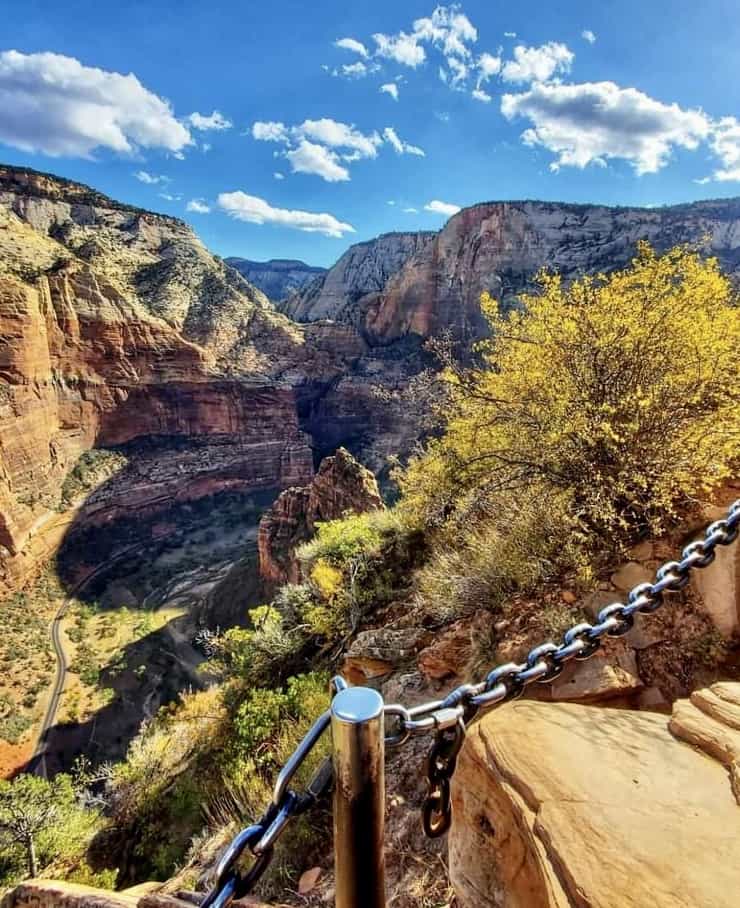
A chain fence surrounds the peak, but if heights make you weak in the knees, you’ll need a double dose of courage to reach the top. This adventure packs a mountain of thrills into a short, tough hike.
After a lot of trudging and scrambling, you’ll arrive at the final viewpoint, and the effort will be well worth it because the view is simply spectacular! Although Angels Landing is far lower in elevation than the rims, it offers an unparalleled 360-degree panorama.
This hike is strenuous and takes around three hours to complete, not including breaks for all the photos you’ll want to shoot along the way. On this hike, you’ll come over some thin cliff ridges that you’ll want to avoid. If you plan to hike this trail, dress warmly because the higher elevations will be very chilly.
Kayenta Trail
The Kayenta Trail is a 2-mile unpaved hike that takes approximately 1.5 hours to complete. It’s a fairly tough hike with some cliffs.
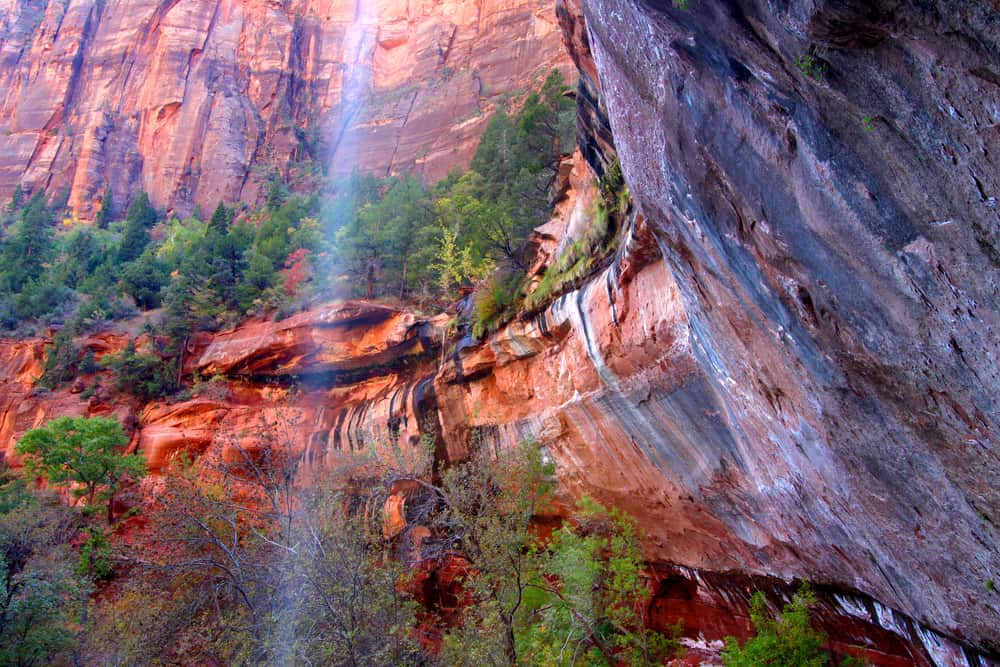
This trail runs against the west wall of Zion Canyon, between the Emerald Pools and Big Bend, in the park’s most popular area. Kayenta Trail is not a very lengthy or challenging trail, but it is vital since it connects many of the other Zion Canyon hikes.
The Emerald Pools are connected to the Grotto by the Kayenta Trail, which in turn is connected to Angels Landing, which takes hikers along part of the East Rim Trail. It is not particularly steep or difficult, but it provides excellent views of the Emerald Pools during the Spring runoff. You will undoubtedly want to take images of Zion Canyon while hiking.
Pa’rus Trail
The Pa’rus Trail is one of the newest and most accessible trails in Zion National Park. It’s the only bike and pet-friendly track in the park, as well as one of the few wheelchair-accessible trails. The trail is also flat enough to allow you to go at your own pace, depending on who is in your direct proximity.
The vista is really beautiful throughout the hike, with numerous bridges across the river, various wildflowers, and mule deer commonly spotted. Due to the sheer thick flora along the Virgin River’s banks, the Pa’rus Trail is great for bird watching—or simply lounging under the shade of a lovely cottonwood tree.
A historic diversion dam that was used to cut off water to Springdale is also an important landmark. The route travels beneath Route 9 near its northern end and finishes at the Canyon Junction shuttle stop.
Kolob Terrace
The Kolob Terrace Road is a remote part of Zion that can be reached through the Kolob Terrace Road. The trail runs to the park’s central area from South Virgin to Lava Point.
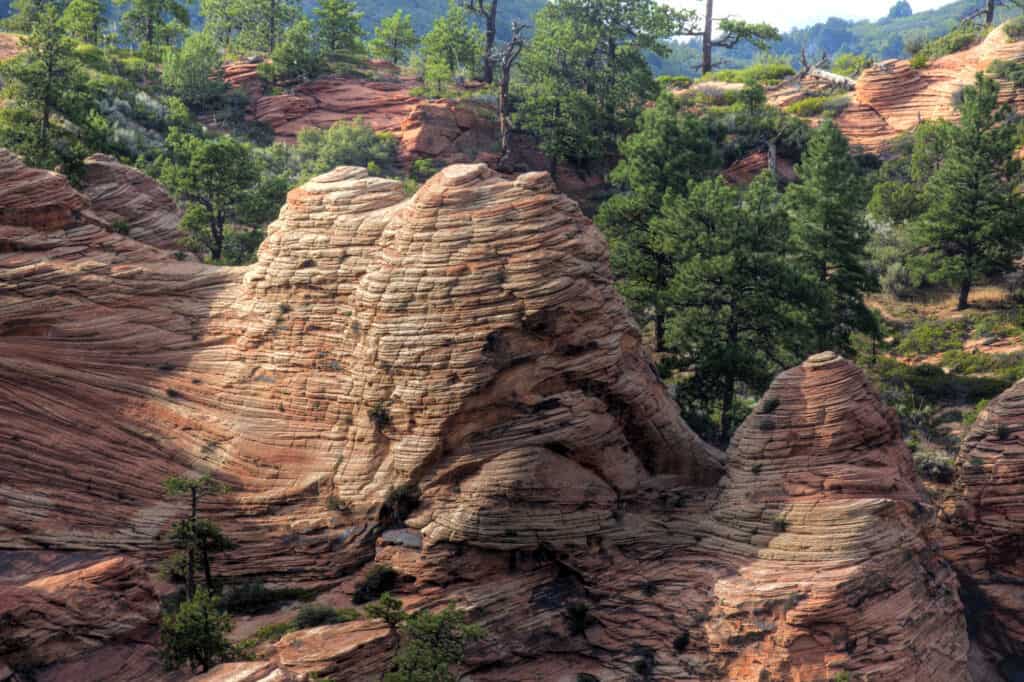
This part of the park is less visited, but it has some of the most beautiful, spectacular views. This portion of the park has several trailheads that lead to the park’s backcountry.
The Kolob Terrace’s Left Fork of North Creek section, called “The Subways,” is a popular tourist destination. Hikers should follow the park’s rules and regulations when hiking in any section of the park, particularly this one.
Kolob Terrace is a great place to visit if you want a different perspective on Zion National Park away from the crowds and development. The unique vibe of Kolob Terrace, which is defined by a wild, free, and secretive nature, is well received by visitors.
Before you arrive, make sure you have enough water in your tanks as water filling stations are not available.
Canyoneering
Canyoneering is a popular activity in Zion. Route-finding, rappelling, problem-solving, swimming, and hiking are all part of this outdoor activity.
The Narrows and The Subway are two of the most well-known canyoneering trails. Permits are required, and all canyoneering restrictions in the park must be followed.
Take a guided canyoneering tour in Zion National Park for a once-in-a-lifetime experience. The fall weather is ideal for exploring the park’s canyons.
Stargaze
Did you know that in the fall, Zion has some of the clearest skies? The national parks, including Zion National Park, are among the best spots in the country to enjoy the breathtaking night sky. To help keep the skies optimal for night sky watching, Zion has gone so far as to install night-friendly lighting at facilities within the park, including Zion Lodge and Zion Canyon Visitor Center.
The Museum patio has a beautiful view of the sky and is a great place to see the sky. There is plenty of parking available, as well as bathrooms. The park’s designated night sky viewing area is located here.
The Kolob Canyons viewpoint, located near the end of the Kolob Canyons scenic drive, is another fantastic spot for stargazing. The darkest skies can be found east of the cliffs.
Recent Posts
15 Tips for Visiting the Grand Canyon in September – 2023 Ultimate Guide
Visiting the Grand Canyon in September is a great time to visit. September is a busy time to visit but the crowds are starting to arrive especially toward the end of the month. I’ve included...
15 Tips for Visiting the Grand Canyon in August – 2023 Ultimate Guide
Visiting the Grand Canyon in August is a great time to visit. August is a busy time to visit but the crowds are starting to arrive especially toward the end of the month. I’ve included all...
